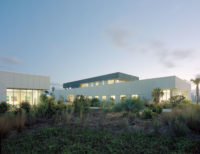A two-tier power system could deliver electricity more dependably to everyone.
Blackouts caused by superstorm Sandy and other recent destructive weather events–coupled with dramatic system failures like the great Northeast blackout of 2003–have undermined confidence in the U.S. electrical grid's ability to keep homes and businesses humming. Those with means are increasingly installing their own power generation, and thus raising a provocative question: could the nation soon have a two-tier power system in which reliable electricity is a luxury, as is the case in many developing countries?

Experts in electrical transmission tend to agree that the U.S. is indeed headed toward such a future, in which people with means and initiative will have more consistent power. But this scenario need not beget electrical “have-nots.” In fact, experts say the generation capacity installed to make some users more independent of the grid could actually strengthen the electrical backbone upon which everyone else depends.
The key to this apparent paradox is the advanced technologies that will dominate the growing backup-power market. Forward-thinking electricity self-providers will eschew gas-guzzling portable generators that sit idle most of the time and often fall short in an emergency. Instead, their go-to backup-power equipment will be smart, reliable, and efficient enough to run year-round.
Jon Wellinghoff, who chairs the Federal Energy Regulatory Commission, which oversees the U.S. grid, says the shift is well under way. One example is the retrofitting of rooftop solar panels, or photovoltaics (PVs), for operating during blackouts. “It's not a fringe idea,” he says.
PV systems generally turn off automatically when the grid goes down, so that utility crews repairing downed lines aren't electrocuted. However, an additional piece of electronics called a transfer switch can, for a few hundred dollars more, allow a system to separate from the grid and safely go on powering its host building.
This “islanding” capability is already standard for Kenny Grigar, cofounder of Taos, New Mexico–based Off-Grid Hardware, which specializes in installing self-sufficient PV systems. Over 40 percent of Grigar's systems are in grid-connected buildings, and most have a transfer switch. Solar panels that don't deliver in a blackout, he says, are only “half a system.”
Most of Grigar's systems also include batteries to store some solar energy for use after sunset. That option is getting cheaper as more people adopt electric cars, charge them from rooftop PVs, then direct some of the stored energy to their houses.
Hobbyists are already rewiring hybrid cars such as Toyota's Prius to power their homes during blackouts. Within the next few years that will be a standard option for plug-in cars, according to Guy AlLee, manager of Intel's Energy Systems Research Center in Rio Rancho, New Mexico.
Several natural-gas-fueled power sources heading for the mass market can similarly multitask. They simultaneously generate electricity and hot water, and the gas lines that feed them are generally unaffected by power outages.
These technologies–smarter PV systems, electric cars, cogeneration–benefit more than just their owners. That's because electricity generated where power is consumed makes the neighboring grid stronger and more resilient. Such distributed generation eases demand on the grid, giving it extra margin when demand spikes. And if the grid does go down, customers looking after their own needs make it that much easier for utilities to bring it back up.
However, this utopian vision of an elite serving the greater good as well as themselves could unravel if utility companies that maintain the grid are undermined. If the “haves” aren't completely reliant on a shared grid, support for maintaining it could slowly disappear. Rob Pratt, who manages “smart grid” R&D at the Pacific Northwest National Laboratory in Richland, Washington, warns of a possible death spiral in which distributed generation saps utility revenues, weakening line maintenance and inspiring further flight from the grid.
One solution is a rate hike for those services that most “haves” will continue to demand of the grid. Utilities buy surplus power from distributed generators and pass it to neighboring consumers; they also make grid power available 24/7 in the event that a basement generator blinks out or dim weather idles a PV system. Pratt says the rates for these grid services can be bumped up so distributed generators pay their fair share without crimping the market.
If regulators get the incentives right, the result should be a grid that delivers reliability for all.
Peter Fairley is a journalist based in Paris and British Columbia who covers energy and the environment for Technology Review and Nature.



Post a comment to this article
Report Abusive Comment